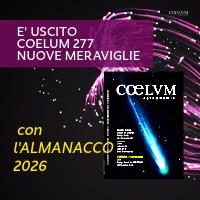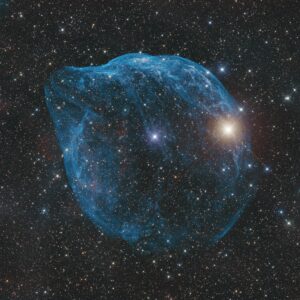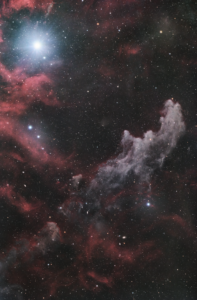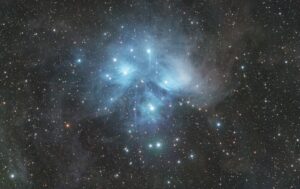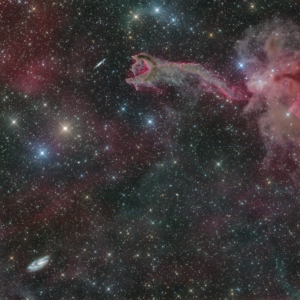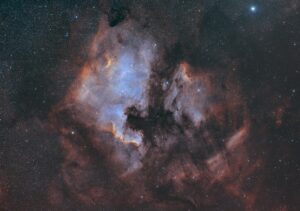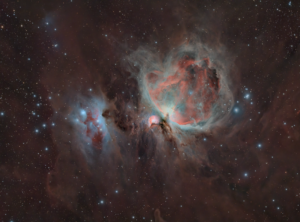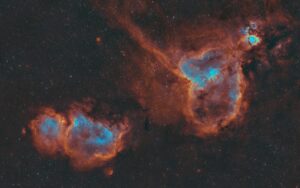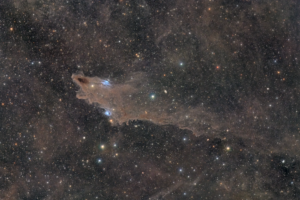Cosmic Flames – Veil Loop – Supernova Remnant
di simone curzi inserita il 3 Ottobre 2023
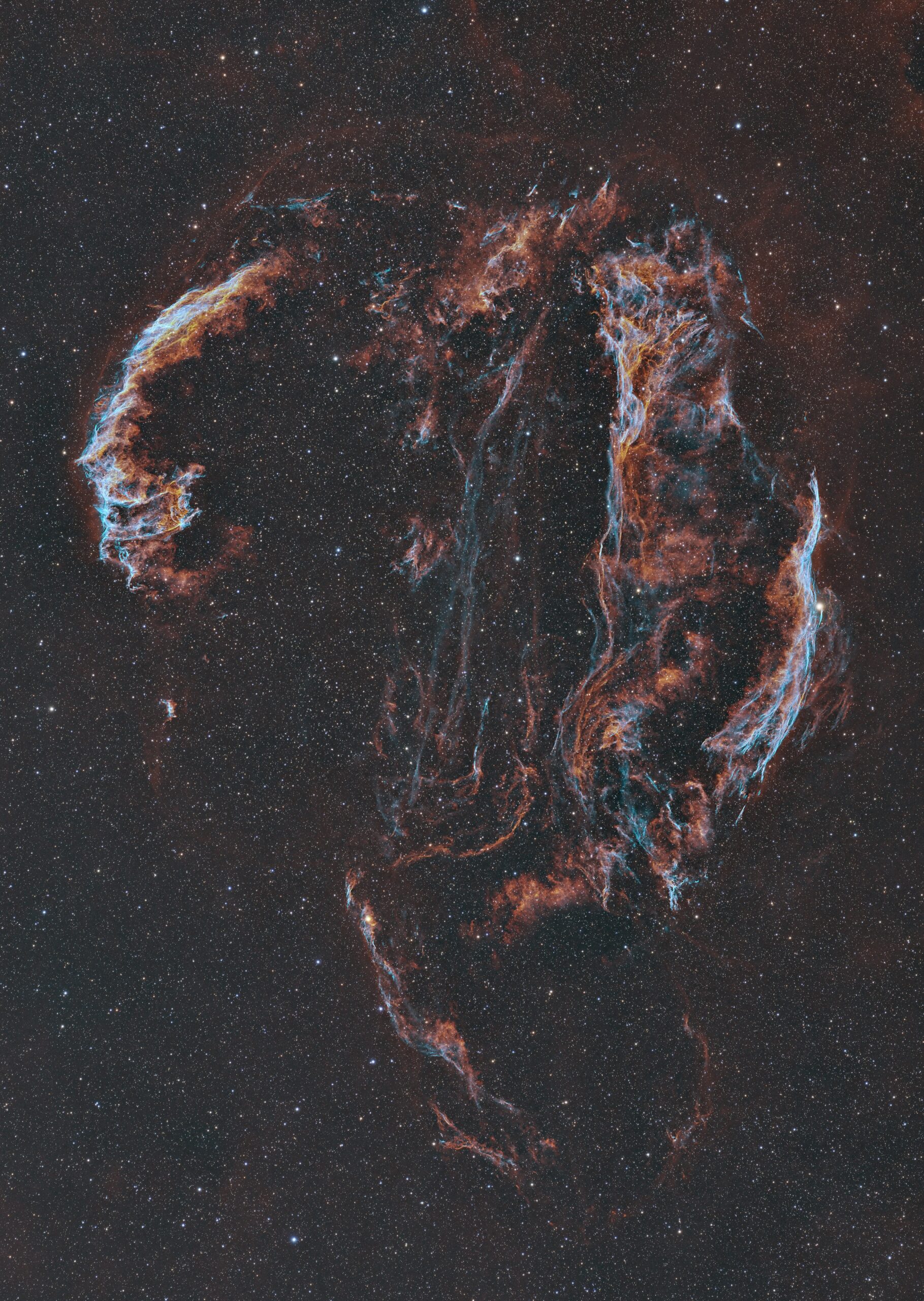
"With my narrowband interpretation, I attempted to dynamically mix hydrogen, oxygen, and sulfur in a formula that would capture my concept of a fiery explosion while remaining faithful to the wavelengths emitted by the gases."
The Veil Nebula, also known as the Cygnus Loop, is a large supernova remnant located in the constellation Cygnus. It is a cloud of gas and dust that resulted from a massive stellar explosion that occurred around 5,000 to 8,000 years ago. The explosion was so powerful that it ejected the outer layers of the star into space, creating a vast and intricate structure that we observe today. The Veil Nebula is one of the most famous and visually striking objects in the night sky. It spans an area of about 3 degrees, which is roughly six times the diameter of the full moon, making it an excellent target for both visual observation and astrophotography. The nebula is composed of two main sections: the Eastern Veil (also called NGC 6992) and the Western Veil (NGC 6960). These sections are separated by a narrow dark lane known as the Cygnus Rift. The Eastern Veil features delicate, filamentous structures that stretch across the field of view, while the Western Veil exhibits a more chaotic and fragmented appearance. The Veil Nebula is located relatively close to Earth, at a distance of about 1,470 light-years. Its proximity allows us to study the intricate details of the remnant and the processes involved in the aftermath of a supernova explosion. The brilliant colors seen in images of the Veil Nebula are produced by different gases in the nebula. Ionized hydrogen emits red light, while ionized oxygen emits green and blue light. These emissions arise from the interaction of the expanding shock wave with the surrounding interstellar medium. Observing the Veil Nebula requires dark skies and a telescope with low to moderate magnification. It is best observed during the summer months in the Northern Hemisphere when the constellation Cygnus is high in the sky. In addition to its visual beauty, the Veil Nebula provides valuable insights into the life cycle of massive stars. By studying its structure and composition, astronomers can gain a better understanding of how supernovae shape the cosmos and contribute to the enrichment of the interstellar medium with heavy elements. Overall, the Veil Nebula stands as a captivating example of the cosmic spectacle left behind by a stellar explosion, allowing us to appreciate the grandeur and complexity of the universe we inhabit.
